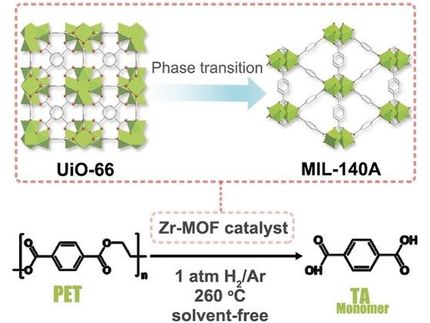Fighting microplastics for a cleaner future
Dr. Manish Shetty is working to break down microplastics to create usable fuel
Advertisement
microplastics, plastics smaller than 5 millimeters, are littered across the world, contributing to global warming, disrupting food chains, and harming ecosystems with toxic chemicals. This is why Dr. Manish Shetty is working to break down plastics before they can get into the environment.
Creating sustainable chemicals and developing better waste management will contribute to better sustainability. This research is part of figuring out how to make green hydrogen available for waste management using catalysts.
Shetty’s research uses solvents in low amounts that also act as hydrogen sources to break down a specific class of plastics called condensation polymers, which include polyethylene terephthalate (PET) bottles, packaging, textiles, and 3D printing.
“What we have done in this research is to break down condensation polymers to aromatic compounds that can be used as fuels,” Shetty said. “We use organic compounds called liquid organic hydrogen carriers to store hydrogen and use that hydrogen to break down the polymers.”
Shetty and his team were able to design catalysts that can harness the stored hydrogen after the breakdown of these condensation polymers, as outlined in Shetty’s recent paper published in Angewandte Chemie International Edition.
The research shows how catalyst surfaces use hydrogen leaving from these organic carriers to transform the PET to p-xylene, a molecule that can be used for fuels or chemicals. Shetty says that his research not only offers a waste-management solution but is also crucial for the sustainability of the chemical industry.
“We have developed a solution for sustainability and waste management on these catalysts,” Shetty said. “These organic molecules transport this hydrogen from where it's generated to where it's used for waste management, especially in an urban environment where we collect a lot of these wastes.”
The research approach is to use methanol for breaking down PET to smaller fragments as well as an H2 source to form p-xylene from PET, a potential chemical or a fuel, according to the paper.
Shetty believes that applying this research could change our economy from relying on fossil fuels.
“One of the things that might happen is, as hydrogen becomes more available, especially for green hydrogen, which is through water electrolysis, we need the hydrogen carriers as a transport vector,” Shetty said. “One such use would be waste management and valorization.”
Original publication
Ryan Helmer, Siddhesh S. Borkar, Aojie Li, Fatima Mahnaz, Jenna Vito, Ashfaq Iftakher, M. M. Faruque Hasan, Srinivas Rangarajan, Manish Shetty; "Tandem Methanolysis and Catalytic Transfer Hydrogenolysis of Polyethylene Terephthalate to p‐Xylene Over Cu/ZnZrOx Catalysts"; Angewandte Chemie International Edition, 2024-11-7





























































